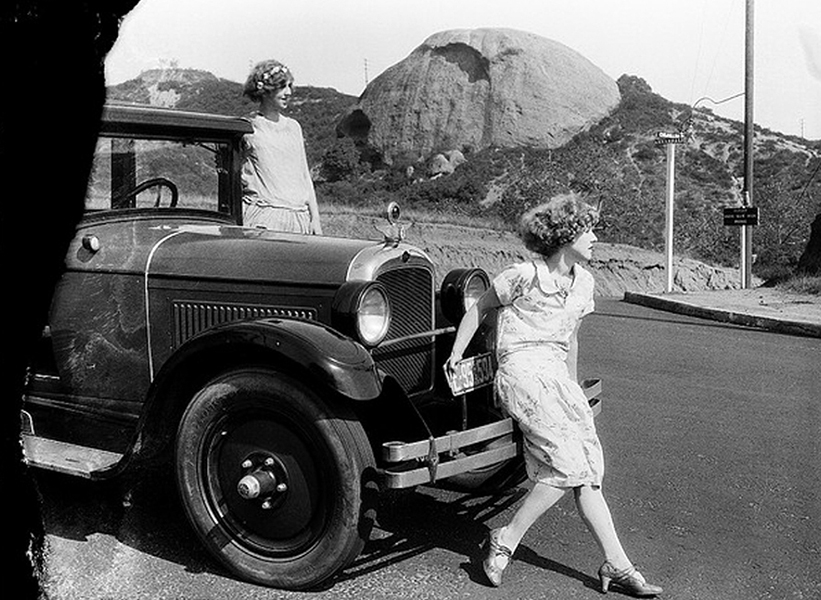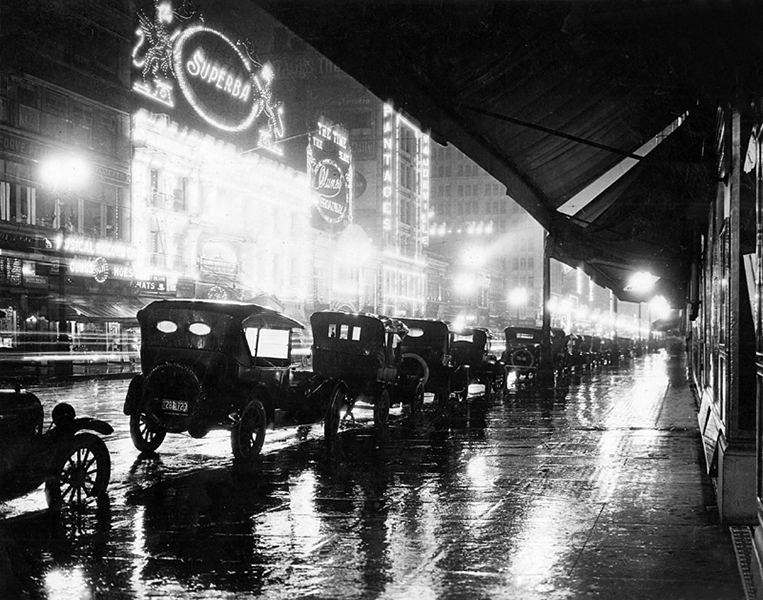Los Angeles
Los Angeles is the de facto capital of Southern California. Founded in 1781 as El Pueblo de la Reyna de Los Angeles by eleven families, it has grown into the largest city west of the Mississippi River. During the 1910s, the population doubled and there is every expectation that this decade will see the same growth. Currently, more than 705,000 Angelenos call the city home. The region experienced its first boom with the discovery of gold in nearby Antelope Valley and then grew quickly again in the aftermath of the Civil War. The arrival of the railroads in 1880 changed a flow into a torrent. In the years between 1880 and 1890, the population grew from 10,000 to 60,000 people and what had been a sleepy town became the center of a vibrant economy.
The future of Los Angeles was secured by the completion of the Los Angeles Aquaduct in 1913. The aquaduct brings plentiful pure water from the Owens Valley to the city, ensuring that droughts and shortages are a thing of the past. The Weld Canyon Dam, which is scheduled to begin construction in the next few months, and the St. Francis Dam, upon which construction will begin next year, will create resevoirs providing an ample reserve of water.
Industry
To the north, the San Fernando Valley was rich agricultural land and soon was growing much of America's orange and lemon crop. In the east, dairy farms abounded, including the nation's largest Guernsey herd. On the coast, the world's largest olive grove produced a quarter million gallons of olives and olive oil. Canneries sprung up to preserve the huge quantities of food produced for shipment across the country.
Los Angeles sits atop vast reservoirs of oil. Right now California is producing a quarter of the world's oil and Signal Hill is the state's largest oil field. Huntington Beach and Santa Fe Springs are two more fields that have been opened in the last couple of years. The pace of drilling is such that new derricks are literally popping up in people's backyards.
Entertainment and Culture
Angelenos prefer to enjoy their entertainment out of doors in the nearly perfect weather of the region. The newly opened Hollywood Bowl is an ampitheatre already hosting some of America's finest acts. For those more inclined to watching sports, the Memorial Coliseum will begin hosting football games and track events for the University of Southern California. In nearby Pasadena, the Rose Bowl is in its second year of serving the Southern Branch of the University of California. If you're looking for quiet, consider a sightseeing drive up into the mountains surrounding the city.
If the night life is more your thing, Los Angeles offers a dizzying array of dining and dancing options. The city is also dotted with picture palaces showing the latest moving pictures. Many of these "movies" are made right here in Los Angeles, where the industry has begun to put down roots, drawn by the scenery and the bright, sunny days.
Transportation
The city is served by the Southern Pacific; Atchison, Topeka and Santa Fe; and Union Pacific railroads.Government
Los Angeles is governed by the Honorable George F. Cryer, who was first elected in 1921 as an anti-corruption reformer. He's up for reelection this year with strong support from the Chamber of Commerce and the Los Angeles police commissioner.
Alternative Name(s)
Ciudad de Los Angeles
Population
706,500




